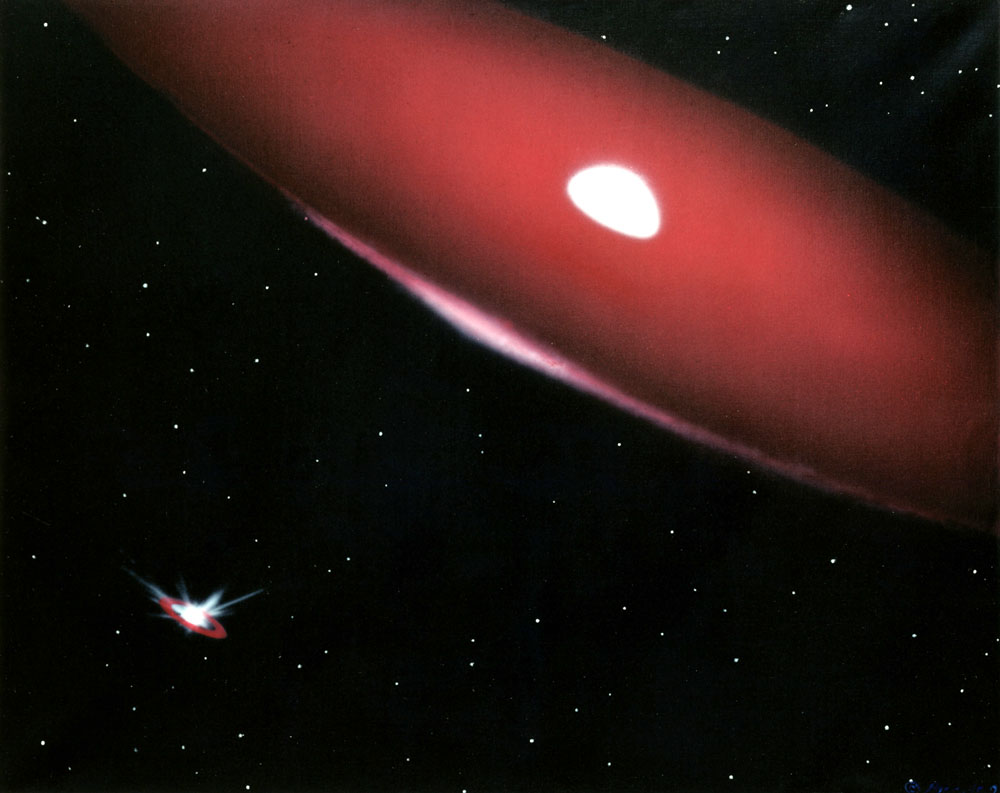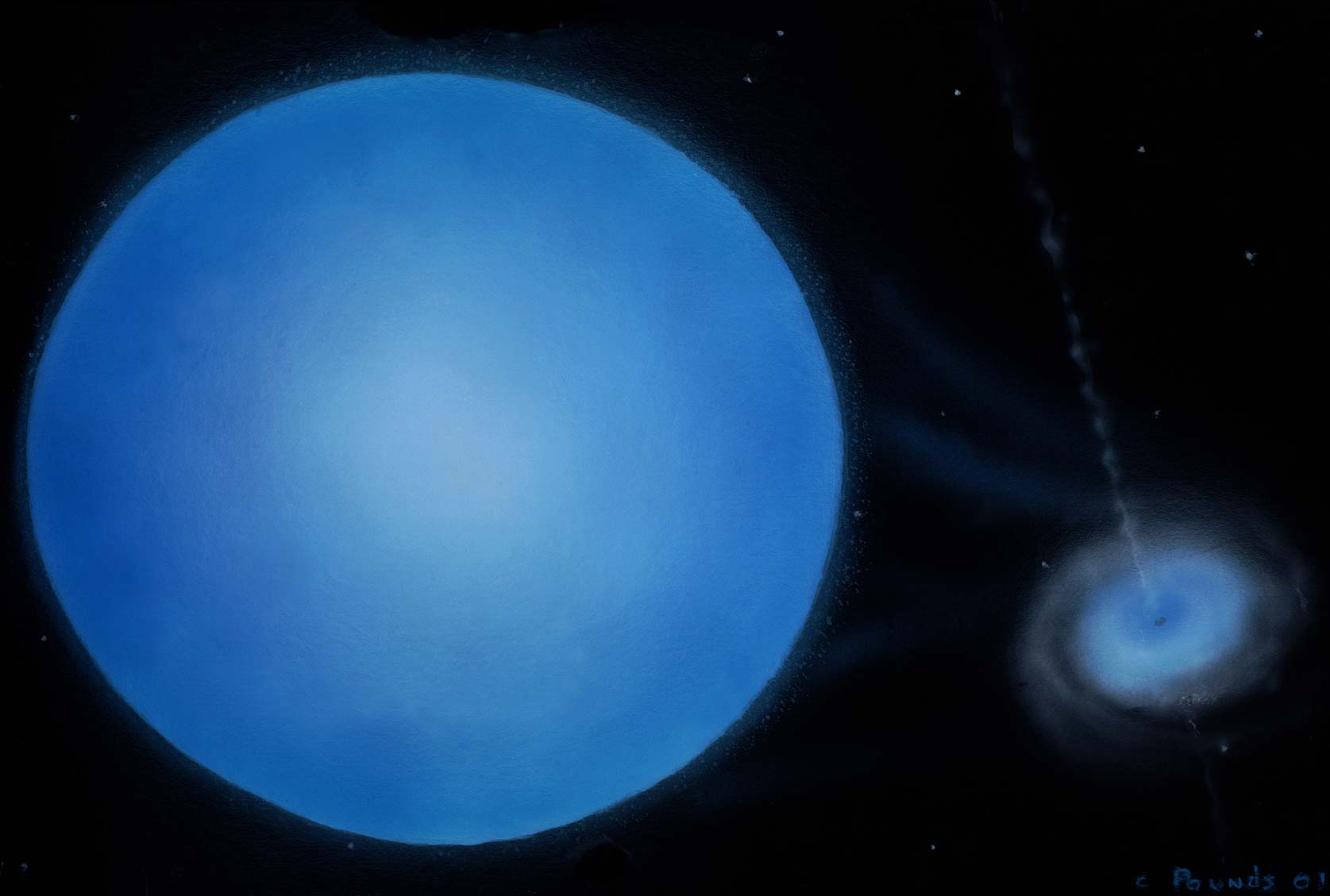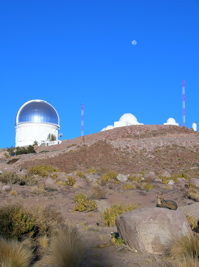Lehigh Astrophysics Group Members
Research Topics
- Classical Be Stars:
Be stars are a particular type of massive B stars that have emission disks
around their equators. They also tend to be rotating very fast! The
disks are probably a consequence of their fast rotation, so where did the
rotation come from? The stars might have been born rotating fast, or they
might have evolved into very fast rotators. The third possibility is that
sometime in their past, a binary companion donated material to the B star
and made it spin faster. I have found that this third case probably
produces about 75% of Be stars. The disks are also highly transient, and
they can appear and disappear over timescales of weeks to months to years.
The Be star phi Persei, illustrated below by Bill Pounds, is a
classical Be star with an evolved, stripped down, helium star companion.

- High mass X-ray and γ-ray binaries:
LS 5039 and LS I +61 303 are two of only 5 known massive binaries that
with emission in the TeV energy range. This rare class of objects may
contain neutron stars or black holes, accreting material from the winds of
the stars and producing relativistic bipolar jets. Or, they may not be
accreting sources at all. The stellar wind may be colliding with a
relativistic pulsar wind to produce high energy emission in a shock region
between the star and compact object. We are currently trying to identify
the true mechanism in these sources.
Below is an artist's interpretation of the "microquasar" model of LS
5039, with weak jets eminating from a neutron star. Painting by Bill
Pounds.

Facilities Used by Lehigh Astronomers

